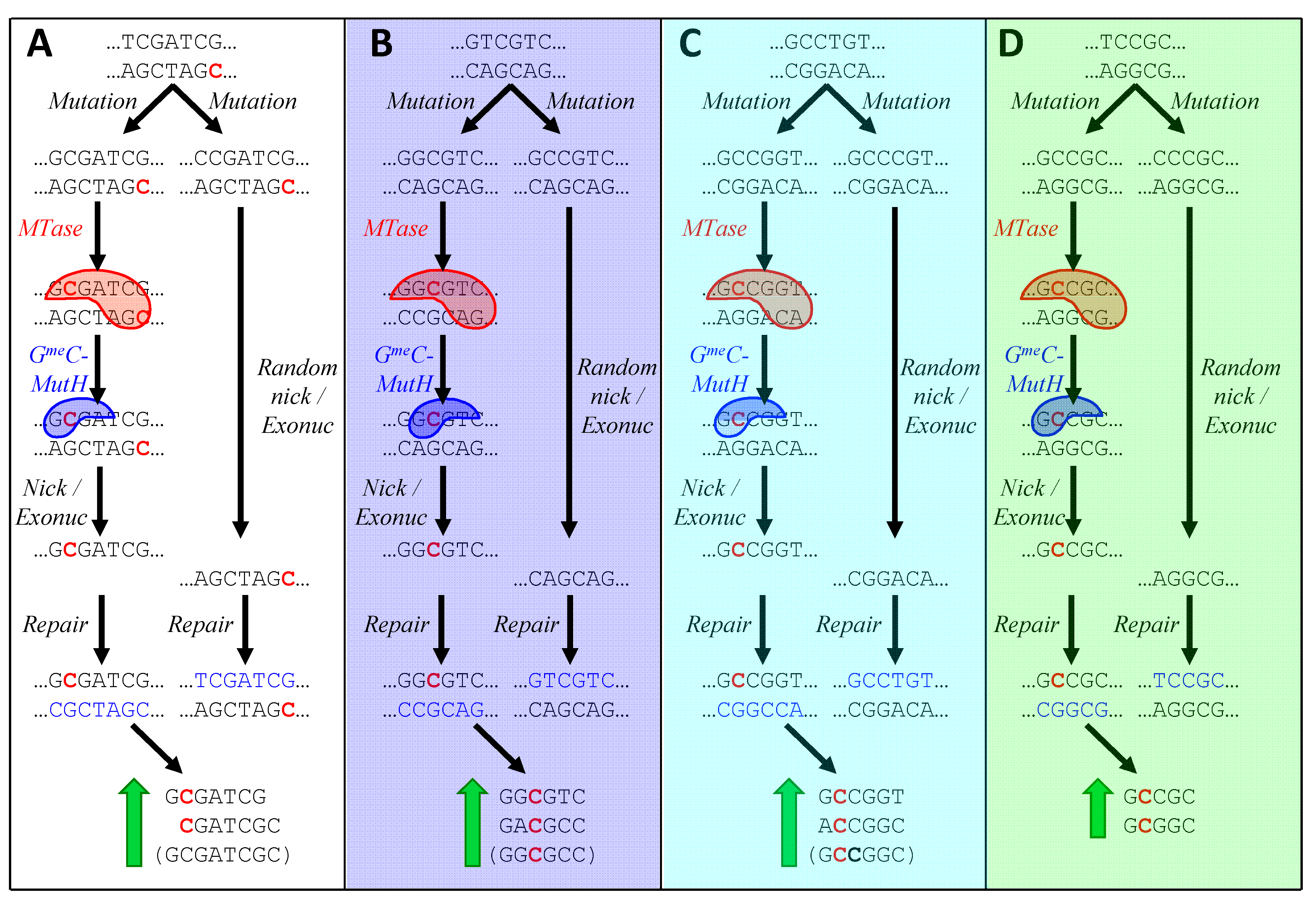

It plays an important role in processes of transcription, replication, and repair mechanisms which are directional. Palindromes are also found frequently in the peptide sequences that make proteins, but their role in the protein function is unknown. Specific palindromic sequences are recognized by the restriction enzymes (restriction endonucleases) and cut them. Note: A palindromic sequence is a sequence in double-stranded DNA or RNA molecule in which reading in a 5'- 3' on one strand matches the sequence reading in the same direction on the complementary strand. BamH1 recognizes this sequence 5' GGATCC 3' and 3' CCTAGG 5'. A palindromic nucleotide sequence forms a hairpin. The nucleotide pairing is like that adenine(A) pairs with thymine(T) in DNA or uracil(U) in RNA, cytosine(C) with guanine(G). Two paired antiparallel strands of nucleotides that run in opposite directions form a double helix. Methylation inactivates the resistant gene this is known as insertional mutagenesis or insertional inactivation. The palindromic sequence also consists of methylation sites where a methyl group can be attached to the palindromic sequence. If in case, the DNA strand is flipped over, the sequence is exactly the same. This palindromic sequence is recognized by the enzyme EcoR1. The top strand reads from 5' -GAATTC -3' and the bottom strand reads 3' -CTTAAG -5'. Restriction enzymes are proteins that cut DNA at a specific palindromic sequence. Why do we call this sequence a palindrome (0.5 pts) Question: 1.

A good example of this is BamHI, which digests at GGATCC locations in the genome. Importance of this sequence is that it reads the same in both directions.Ī palindromic sequence is defined as a nucleotide sequence in a double-stranded DNA or RNA, when we read it from 5' end to 3' end is the same as that on the complementary strand reading from 3' end to 5' end. Restriction enzymes are proteins that cut DNA at a specific palindromic sequence. When the complementary strand is read backwards, the sequence is 5’-GGATCC-3’ which is identical to the first one. This is the sequence where the restriction endonuclease, BamHI, binds to and cleaves at a specific cleavage site. Palindromic sequences are typically 3 to 5 bases in length. An example of a palindromic sequence is 5’-GGATCC-3’, which has a complementary strand, 3’-CCTAGG-5’. The palindromic sequence has an important role in molecular biology, as the DNA sequence is double-stranded and by reading base pairs palindromes can be determined. In molecular biology, a self-complementary nucleic acid sequence a sequence identical to its complementary strand, if both are 'read' in the same 5' to 3' direction, or inverted repeating sequences running in opposite directions (for example, 5'-AGTTGA-3') on either side of an axis of symmetry palindromes occur at sites of important reactions (for example, binding sites, sites cleaved by. The enzyme recognizes the sequence doesn’t matter from which side the enzyme approaches the DNA. Hint: A palindromic sequence is the same forwards and backward on both sides.


 0 kommentar(er)
0 kommentar(er)
